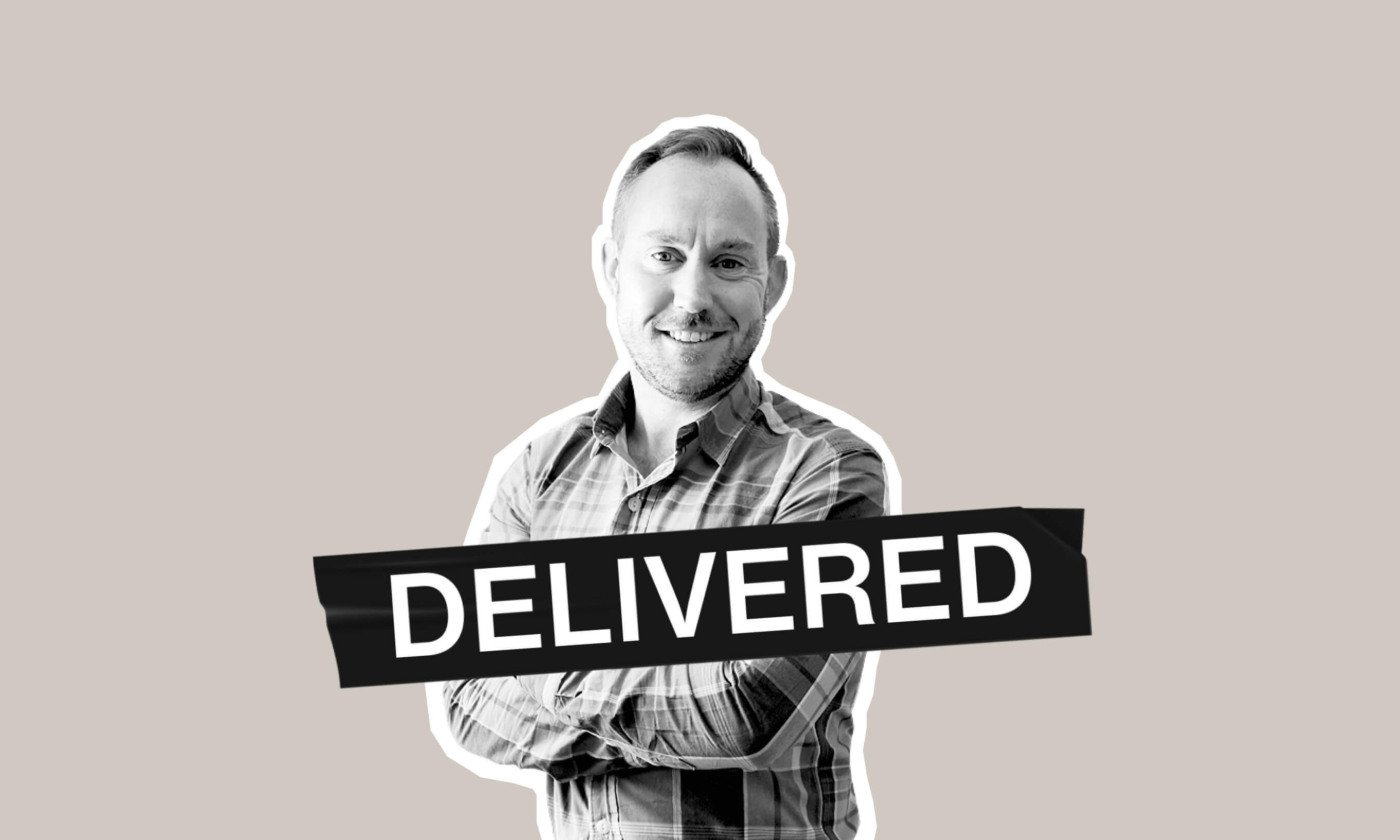Master storyteller Gareth Dimelow appears in our event series Delivered to discuss the role of storytelling in brand differentiation and connecting with your target audience.
In today’s fiercely competitive market, the quest for authenticity remains fundamental for your brand’s distinction, engaging your target audience, and creating a lasting impact.
Chief storyteller and co-founder of Inside Stories, Gareth Dimelow, appeared as a guest on our show Delivered and shared fascinating insights on the transformative potential of business storytelling for brands.
Wired for storytelling, not content creation
Storytelling is a unique form of communication that taps into how the human brain reacts when it recognizes a story. Our brains have been hardwired to pay attention to stories more effectively than isolated facts or data since the beginning of humanity because it meant survival. And that’s something businesses can leverage for themselves instead of relying on what Gareth refers to as content creation. So, what’s the difference between the two?
Storytelling is a more strategic and emotional approach to communication that resonates with the audience, connects with their experiences, and triggers emotional responses.
Content creation involves the generation of various types of materials for specific marketing or communication purposes. These materials often lack a cohesive narrative structure and don’t have the same emotional impact as a well-crafted story.
The story is like the Force
Gareth highlights a common misconception about storytelling. He notes that in recent years, “storytelling” has become a buzzword everyone has embraced, but not many understand its true meaning. Storytelling is often reduced to a set of words or statements, like a mission statement or a marketing campaign.
In reality, the story goes far beyond these individual components. Storytelling is a comprehensive and integrated element that is interwoven throughout a brand’s identity and communication, not a stand-alone concept.
“You could have a whole company full of people who are excited and empowered by a chance to talk about what they do, what drives them, and that’s what gets them excited. That’s where the story lives. You find it in the organizational values, in a manifesto that a business puts out to the world, the elevator pitch, and the strapline that sits under the logo. It’s everywhere, and it’s in everything. It’s kind of like the Force. It unites us and binds us together”, explains Gareth.
The three M’s of successful storytelling
Business storytelling is a fundamental tool that helps brands, regardless of their size, change the way they think about themselves and how they communicate their purpose to the world. It is a powerful means of creating alignment within a team, facilitating innovation, and leaving a meaningful, memorable, and moving impact on the audience.
Those are the three secret ingredients of a successful and compelling narrative. Meaningful storytelling goes beyond the superficial. It delves deep to convey a powerful message or lesson. Memorable stories are the ones that stick. They are so vivid, touching, or unique that they remain etched in the audience’s memory. Moving stories evoke strong emotions. Gareth describes this as an experience of “mirrored brain behavior,” where the storyteller and the audience share emotionally charged moments, forging a powerful connection.
There’s no hero without a villain
Every brand has an origin story, which often gets condensed into mere facts like the year of establishment or the number of employees.
“I think a lot of businesses think that the origin story and the biography are the same thing.
So when asked to tell a story, they talk about what year they were founded, how many people, and what investment they got. And that’s not telling a story, that’s just talking about yourself,” concludes Gareth.
Brands need to move beyond this bare-bones approach and explore not just how they came into existence but what they aspire to be. This way, they can humanize themselves, making it easier for customers to relate to and connect with them. One way to do that is by employing the hero’s journey narrative structure.
The hero’s journey introduces conflict, trial, and eventual transformation. For instance, a brand’s nemesis may represent its industry’s pain points or drawbacks.
By naming and personalizing this adversary, the brand can build a narrative centered around conquering the foe, i.e., solving industry issues.
“It’s common for businesses and brands to sugarcoat everything and focus only on positivity, avoiding discussing failures or challenges. Everything’s got to be ‘up up up’ because someone on a higher pay grade is going to say, ‘Oh, that sounds negative’. But what that does is drain all of the humility out of it, and everything just sounds boastful and arrogant. If you can acknowledge failure but reflect on the learning that came out of that failure, you end up emulating the most powerful part of the hero’s journey, which is the death and resurrection moment”, explains Gareth.
How storytelling drives product strategy and fuels innovation
Gareth points out that the word “strategy” has been overused and misappropriated, just like the word storytelling, and people have lost sight of its true meaning. Both strategy and storytelling involve shaping information into a narrative that resonates with the audience.
Strategy is, in essence, a form of storytelling. It’s about making sense of data in a way that facilitates comprehension, understanding, and engagement.
Gareth also highlights the role of storytelling in driving innovation. He distinguishes between invention and innovation, where innovation requires looking at problems from new perspectives, motivated by a deep understanding of user needs. This approach aligns with the principles of storytelling, which require empathy and stepping into someone’s shoes to see the world from their point of view.
The user experience (UX) domain is a domain where storytelling often remains underutilized. When applied to product development, storytelling can help shape user-centered and innovative products that stand out in the market.
If you’d like to learn more about utilizing storytelling to make your brand stand out, watch the full episode here.










